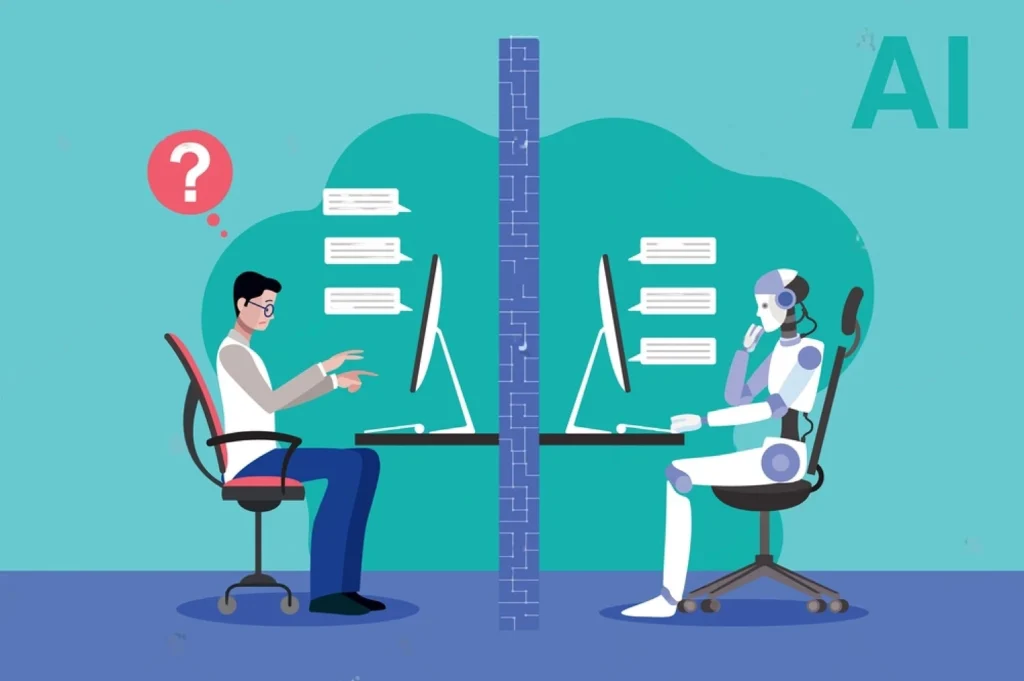
History of the Turing Test
The earliest known work to test the human-like intelligence of machines is found in the concepts founded by Alan Turing in his 1950 paper “Computing Machinery and Intelligence.” Alan’s original proposal for the Turing Test emphasized the question, “Can machines think?”To answer this question, Alan came out with a party game called “The Imitation Game” where a human judge will engage in a natural language conversation with both a human (Player A) and a machine (Player B), without knowing their real identities. If, during that talk, the human judge fails to distinguish the machine from the human, the machine is supposed to have passed Turing’s Test.Over the following decades, with artificial intelligence (AI) has seen significant progress, Turing Test has evolved too. In 1950, Turing said about this game:“I believe that in about fifty years’ time it will be possible to programme computers, with a storage capacity of about 109, to make them play the imitation game so well that an average interrogator will not have more than 70 percent chance of making the right identification after five minutes of questioning. … I believe that at the end of the century the use of words and general educated opinion will have altered so much that one will be able to speak of machines thinking without expecting to be contradicted.”

How Does the Turing Test Work?
The Turing Test is performed by placing a human and a machine in separate rooms. Suppose there is a person, a machine and an interrogator (a judge or a panel of judges). The interrogator will be placed in a room separate from the other human and the machine. The purpose of the game (test) for the interrogator is to distinguish which of the two is the human and the machine.The interrogator assumes the human is X and the machine is Y before beginning the game, without actually knowing which of the other human and the machine is X. At the end of the game, he says either ‘X is the human and Y is the machine’ or ‘X is the machine and Y is the human’.The interrogator will ask questions from the human and the machine of the following kind: “Will X tell me whether X plays chess?” Whichever X, the other human or the machine, must answer the questions addressed to X. The machine aims to fool the interrogator to mistakenly conclude that the other human is the machine while the other human tries to help the interrogator to correctly identify the machine.If the interrogator fails to distinguish the answers provided by both the other human and the machine, then the machine will pass the test and will be considered as intelligent as a human.Chatbots that Attempted the Turing Test
ELIZA: A Natural Language Processing (NLP) named ELIZA, created by Joseph Weizenbaum, was one of the first chatterbots to have attempted the Turing Test.Parry: Created by Kenneth Colby in 1972, Parry was a chatbot designed to simulate a person with Paranoid schizophrenia (a chronic mental disorder). Parry underwent the Turing Test in the early 1970s using a variation.Eugene Goostman: This chatbot was developed in Saint Petersburg in 2001. Eugene Goostman resembled a 13-year-old virtual boy who had fooled 33% of judges in the Turing Test 2014 and won the competition.Limitations of the Turing Test
While the Turing Test was a remarkable and influential discovery in studying the human-like responses and intelligence of computers, the test is not a sufficient indicator of artificial intelligence. The Turing Test fails on multiple accounts such as:- To determine whether or not a computer or a machine understands its input and output.
- To account for a machine’s ability to recognize patterns or its ability to apply common knowledge or sense.
- The computer may fail a human interrogator based on its similar responses as a human.

